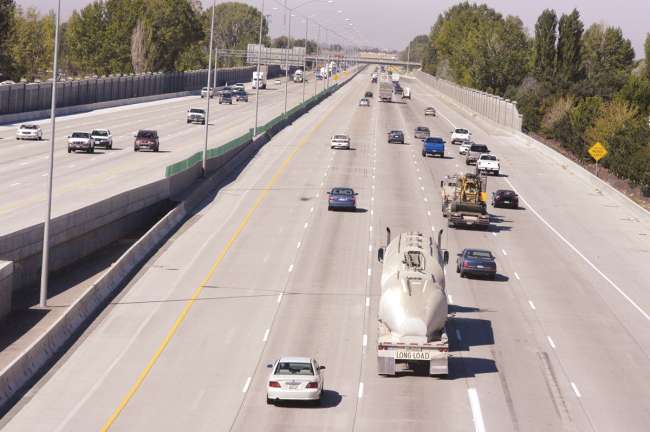Staff Reporter
Idaho Weigh-in-Motion Sensors Save Industry $3.5 Million

Weigh-in-motion systems dispersed across four ports of entry in Idaho saved the trucking industry $3.5 million from July 2016 to June 2017, according to a report from the state’s Department of Transportation.

Weigh-in-motion sensors are embedded in roadways and register a passing truck’s weight. Drivers whose vehicles meet requirements can bypass the weigh station, those who do not are notified via their in-cab device and must pull over to be inspected. Commercial drivers save 5 minutes and $8.68 per bypass, according to IDT.
“The goal from IDT has always been to make sure that safety is followed,” said Reymundo Rodriguez, Department of Motor Vehicle compliance manager at IDT. “When we put these in our highways, it was to improve freight transportation while maintaining safety. We think this is a great thing for the customers and for us.”
Idaho’s weight sensors were deployed at various times over the past decade at four ports of entry: Huetter, Lewiston, East Boise and Inkom.

Pipal
Julie Pipal, president of the Idaho Trucking Association, said companies that use the systems frequently reinvest their monetary savings to ensure their equipment and trucks are running smoothly. She also said that fuel savings were important, as some of her members pass through the East Boise port 20 to 30 times a day.
“Any time you can save on fuel, that is very important to a carrier,” Pipal said. “Bypasses really do make a difference.”
Jason Andrus, chief financial officer of Doug Andrus Distributing, said time is as valuable as money and fuel. Doug Andrus Distributing is based in Idaho Falls, Idaho, and manages a fleet of 260 trucks and 500 trailers. Andrus said that, of the four ports of entry furnished with sensors, the company uses the Inkom station most frequently.
Doug Andrus Distributing adopted bypass technology about 10 years ago, according to Andrus. He said that, with the impending electronic logging device mandate and an industrywide driver shortage, time is an important resource. According to American Trucking Associations, the industry was short 48,000 drivers in 2015.
“That time savings in today’s world has become even more valuable than when we initially implemented the systems. Every minute we can drive is pretty valuable to us,” Andrus said. “Savings go straight to our bottom line. It helps us to get a better return on our investment and be more efficient.”
The most popular of the four weigh-in-motion ports is East Boise, which Rodriguez said had a truck count of 1,456,825 in fiscal year 2017. The port, located 20 miles southeast of the state capital, saw 247,378 vehicle bypasses during fiscal 2017.
The Inkom port of entry, located in the southwest portion of the state, was the most recent to be furnished with weigh-in-motion technology. The systems were installed in January, and IDT recorded Inkom had 5,600 bypasses for the month of June.
Every minute we can drive is pretty valuable to us. Savings go straight to our bottom line.
Jason Andrus, CFO, Doug Andrus Distributing
Last year, some 58,356 trucks bypassed the Huetter port of entry, which is located in northern Idaho and had an annual truck count of 253,821 vehicles. The Lewiston port of entry, located less than 10 miles from the Washington border, had 89,049 vehicle bypasses, a large percentage of its 124,865 annual truck count.
“Any kind of bypass opportunity, as long as we’re taking care of the safety concerns, is going to be beneficial to carriers,” Pipal said.
Bypass technologies have grown increasingly popular among states and motor carriers. The Arizona Department of Transportation installed Drivewyze PreClear systems this past summer to reduce wait times at weigh stations. Drivewyze is a bypass service that has a presence in 42 states.
Some 40 states also use PrePass, which offers a similar service to Drivewyze. Although Pipal said that Idaho is not a PrePass state, she said weigh-in-motion sensors will encourage the use of emerging technology in Idaho.
“What they’re showing is just a small fraction of what is possible with the technology that’s available to carriers,” Pipal said. “We’ve probably only begun to see the benefit of those systems for our carriers.”




